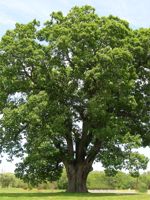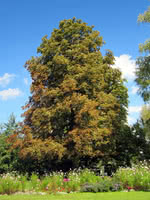Mon-Fri 9am - 5pm Mountain time
White Oak vs Horse Chestnut
Quercus alba
Aesculus hippocastanum
CUSTOM GROW
White Oak is large, long-lived tree with an irregular trunk divided into spreading, often horizontal, stout branches. A highly adaptable tree, White Oak features green acorns and beautiful green leaves that turn red-purple in the fall.
With a huge growth in bourbon and scotch over the past few decades there is an emerging shortage of white oak that is the primary tree used for cask barrels and aging.
Note: Most Oak species can be considered toxic for many animals.
Horse Chestnut is a medium sized deciduous tree that is native to Greece but has been grown in North America for hundreds of years. It produces large nuts.
A top CO2 absorbing species. Experts think this tree may help climate change more than others.
White Oak Quick Facts
Horse Chestnut Quick Facts
Toxicity: most parts of plant are toxic

